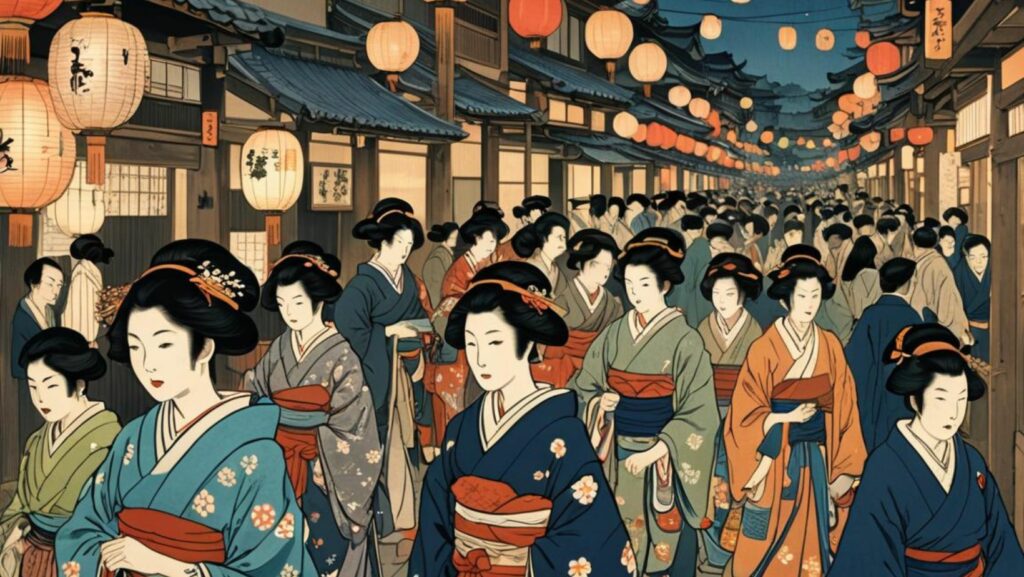Anime, a vibrant tapestry of art and storytelling, has captivated audiences worldwide with its unique blend of visual style and narrative depth. Originating in Japan, anime isn’t just a form of entertainment; it’s a cultural phenomenon that reflects the intricacies of Japanese society while resonating with universal themes. From fantastical worlds to everyday life, anime explores a vast array of genres, offering something for everyone.
As anime continues to gain global popularity, it serves as a cultural bridge, introducing audiences to Japanese traditions, values, and philosophies. Its influence extends beyond television screens, inspiring fashion, art, and even language. With its rich history and diverse expressions, anime invites viewers to embark on journeys that challenge perceptions and ignite imaginations. Understanding anime’s cultural roots offers a deeper appreciation of its impact and enduring appeal.
What Culture Is Anime
 Anime represents a vibrant cultural expression originating from Japan, characterized by its distinct visual style and complex narratives. Many series delve into societal issues like family dynamics, hierarchy, and ethical dilemmas, often reflecting Japanese values and social norms. By touching on universal themes, anime transcends cultural boundaries, promoting cross-cultural understanding.
Anime represents a vibrant cultural expression originating from Japan, characterized by its distinct visual style and complex narratives. Many series delve into societal issues like family dynamics, hierarchy, and ethical dilemmas, often reflecting Japanese values and social norms. By touching on universal themes, anime transcends cultural boundaries, promoting cross-cultural understanding.
Genres abound in anime, ranging from science fiction to slice-of-life, allowing for varied storytelling. Examples like “Naruto” and “Akira” showcase diverse artistry and narrative depth. Popular anime conventions such as “jump” and “shounen” further illustrate the genre’s multifaceted nature. This diversity enables anime to engage broad audiences, bridging cultural gaps.
The global rise of anime underscores its cultural significance as more people are drawn to its unique style and storytelling. Countries worldwide incorporate anime into their own cultural landscapes, influencing art, fashion, and entertainment. This international appeal not only enhances anime’s reach but also fosters an appreciation for Japanese culture.
History of Anime
Anime emerged in the early 20th century in Japan and evolved into a significant cultural force. It mirrors Japan’s traditions and values while resonating globally.
Origins and Evolution
Anime’s roots trace back to the 1910s with early Japanese animation works, influenced by Western cartoons. In the post-World War II era, pioneers like Osamu Tezuka revolutionized the industry with iconic series such as “Astro Boy,” setting the stage for modern anime’s dynamic visual and narrative style.
like Osamu Tezuka revolutionized the industry with iconic series such as “Astro Boy,” setting the stage for modern anime’s dynamic visual and narrative style.
Tackling societal issues with depth and subtlety, anime often critiques modern life. Works like “Attack on Titan” and “Neon Genesis Evangelion” address themes of existential dread, authority, and individual vs. society. Through rich narratives, anime sparks discussion on critical social issues, reflecting and challenging cultural norms.
Anime employs diverse storytelling techniques that captivate audiences. Non-linear narratives often provide complex storytelling, weaving past and present events. This structure adds layers to series like “Neon Genesis Evangelion,” enhancing viewer engagement.
Symbolism is another tool frequently used. Shows like “Death Note” integrate deep symbolism to explore themes of morality and justice. This rich narrative depth challenges audiences to interpret and reflect on the underlying messages.
 Character development features prominently in anime. With intricate backstories and evolving motivations, characters become relatable and memorable. For instance, “My Hero Academia” showcases character growth through personal struggles and triumphs, resonating with viewers globally.
Character development features prominently in anime. With intricate backstories and evolving motivations, characters become relatable and memorable. For instance, “My Hero Academia” showcases character growth through personal struggles and triumphs, resonating with viewers globally.
Anime storytelling often addresses universal themes such as identity, power, and existentialism. Works like “Fullmetal Alchemist” explore the human condition, delivering profound messages that cross cultural boundaries.
Anime’s unique storytelling methods—non-linear narratives, symbolism, and in-depth character development—establish it as a compelling form of art that inspires and provokes thought.
Popular Genres in Anime
Anime’s diverse genres cater to a wide range of interests, making it accessible to audiences worldwide. From the adrenaline-pumping action of shonen series like “Naruto” to the heartwarming stories in slice-of-life anime, there’s something for everyone. Science fiction and fantasy genres transport viewers to imaginative worlds, while romance and drama explore the complexities of human relationships. Horror and thriller genres offer suspense and intrigue, often delving into psychological themes. This variety not only showcases anime’s versatility but also its ability to connect with viewers on multiple levels, ensuring its continued global appeal and cultural significance.

